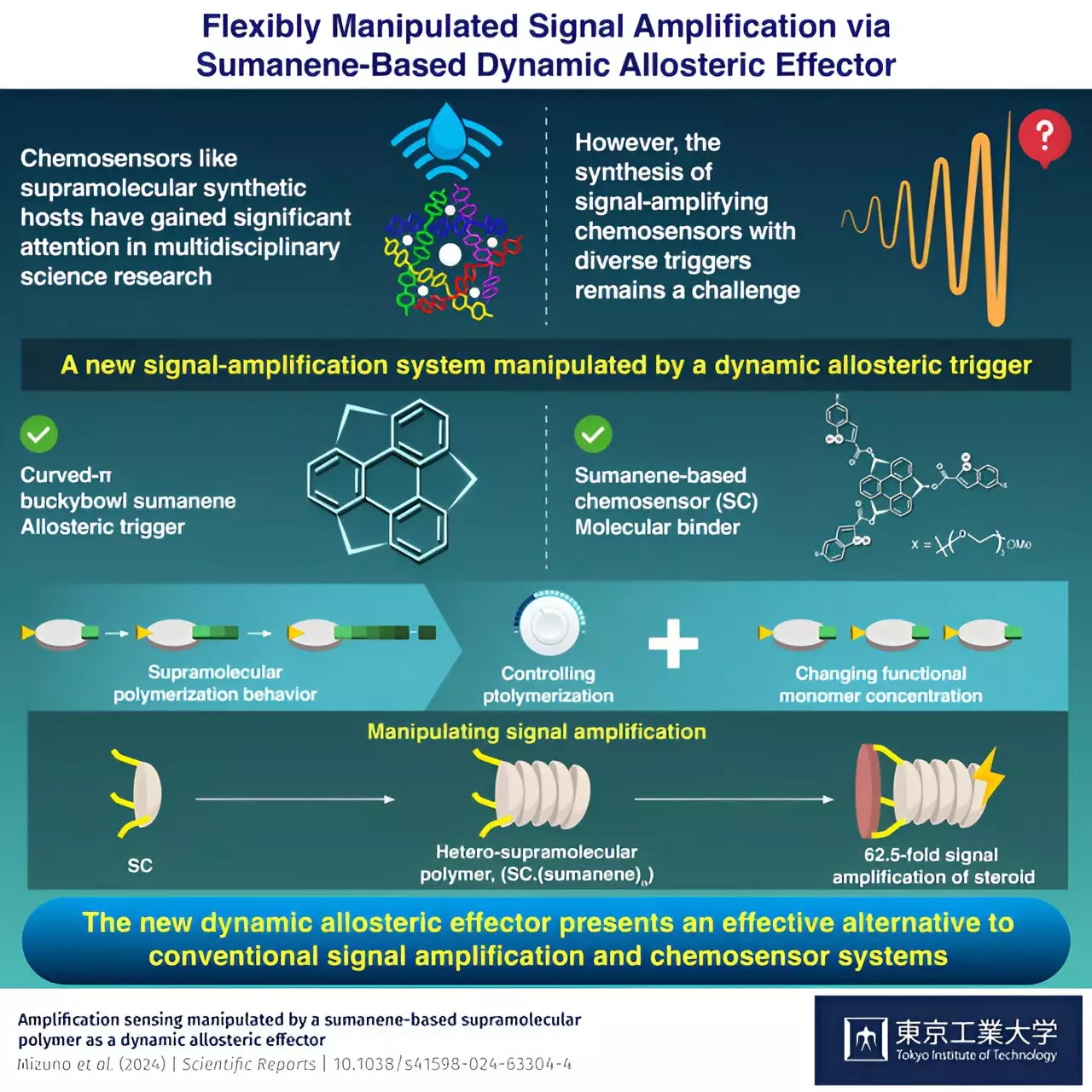In recent days, the world of chemical sensors has taken a monumental leap forward, primarily due to groundbreaking research from Tokyo Tech and Osaka University. The advent of chemical sensing systems that can dynamically amplify their signal through various triggers represents a major milestone in multidisciplinary sciences. This shift not only enhances molecular recognition but also propels forward the accuracy of real-time biomedical sensing. Historically, the development of such adaptable systems was thought to be obstructively challenging. However, thanks to innovative insights, there’s now excitement surrounding this previously daunting field.
Understanding the Mechanism of Signal Amplification
At the heart of these advanced chemosensors lies a fundamental concept: the lock-and-key model of molecular interaction. This model exemplifies how a specific chemical substrate fits perfectly into the active site of a receptor—a metaphorical lock. Yet, the model is not devoid of pitfalls; various factors can limit the efficiency of this interaction, leading researchers to explore more dynamic mechanisms of signal enhancement. This is where allosterism plays a significant role. By amplifying the binding constant between a target molecule and its receptor, chemical sensors can achieve superior sensitivity—a pursuit that has preoccupied scientists for years.
In the recent study led by Associate Professor Gaku Fukuhara, the researchers demonstrated an ingenious application of supramolecular chemistry to tackle the inherent limitations of the traditional lock-and-key approach. Utilizing a unique allosteric effector, they unveiled a system that could be flexibly manipulated, thus opening doors to previously uncharted applications in the field of chemical sensing.
The Groundbreaking Role of Sumanene
A pivotal aspect of this research is the incorporation of sumanene, a novel organic molecule that exhibits intricate properties conducive to supramolecular assembly. By leveraging sumanene’s ability to undergo spontaneous polymerization in solution, the team effectively created hetero-supramolecular polymers, an innovative twist on standard polymer chemistry. Sumanene’s curved structure allows it to stack neatly, enhancing the system’s responsiveness when combined with the chemosensor. This feature is crucial in improving the overall signal amplification, establishing a strong relationship between the molecular architecture and the sensor’s functionality.
Fukuhara’s team turned conventional expectations on their head by correlating the signal amplification directly to the concentration of the sumanene monomers. The innovative dynamics of this setup allowed for unparalleled manipulation of electronic properties at the binding sites—a feat previously thought implausible. The results showed a staggering 62.5-fold increase in signal when steroid molecules such as testosterone and corticosterone were used, showcasing not just the potential but the transformative nature of their discovery.
The Implications for Future Research
The implications of this groundbreaking study extend far beyond its immediate applications. The newfound ability to manipulate signal amplification through an allosteric mechanism positions this research as a framework for developing future sensors that can accurately identify a broad spectrum of complex biological substances. The traditional confines imposed by lock-and-key mechanisms may soon be rendered obsolete as this groundbreaking system thrives on flexibility and adaptability.
The vision presented by Fukuhara and his collaborators reflects a broader ambition within the scientific community: to create tools that respond dynamically to varying stimuli, thereby facilitating a more nuanced understanding of intricate biological interactions. The potential applications of such a system range from environmental monitoring to medical diagnostics, laying the groundwork for innovations that could ultimately lead to the development of personalized medicine.
The Power of Collaborative Science
This groundbreaking discovery exemplifies the potent outcomes of collaborative scientific endeavors. By pooling expertise from diverse fields, including materials science, chemistry, and biology, researchers have developed a robust new platform for signal amplification in chemical sensors. Their work not only showcases the promise of supramolecular chemistry but also highlights the importance of interdisciplinary dialogue in tackling multifaceted scientific challenges.
The innovative approaches seen in this research signify an exciting phase in chemical sensor technology, with the promise of profound implications for a variety of fields. By embracing complexity and leveraging dynamic mechanisms, scientists are opening up a new era in the realm of molecular recognition—one that could redefine how we understand and interact with the chemical world around us.

